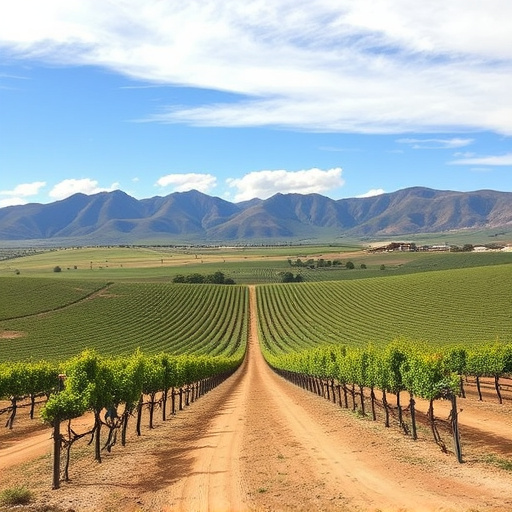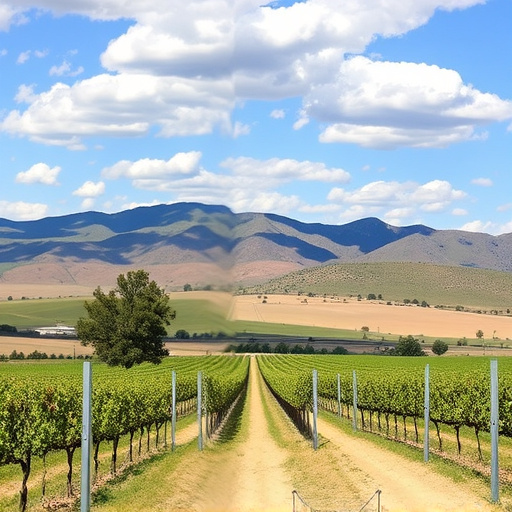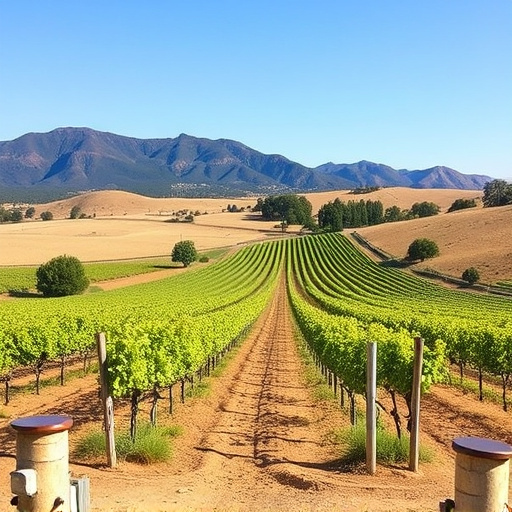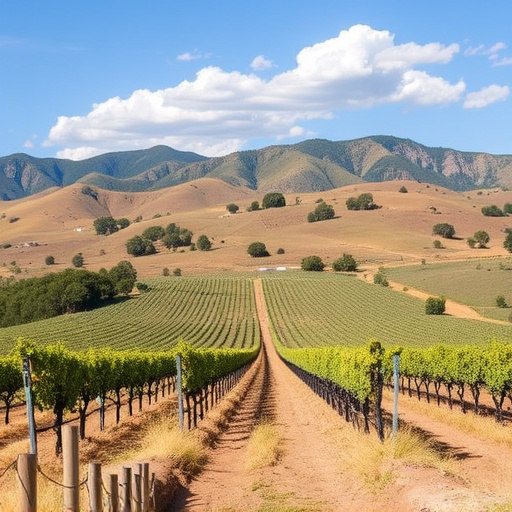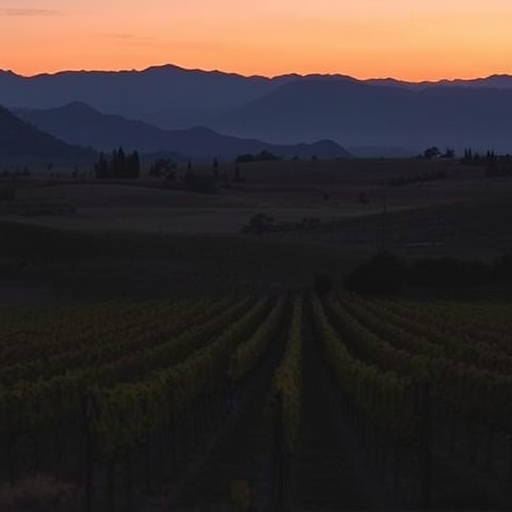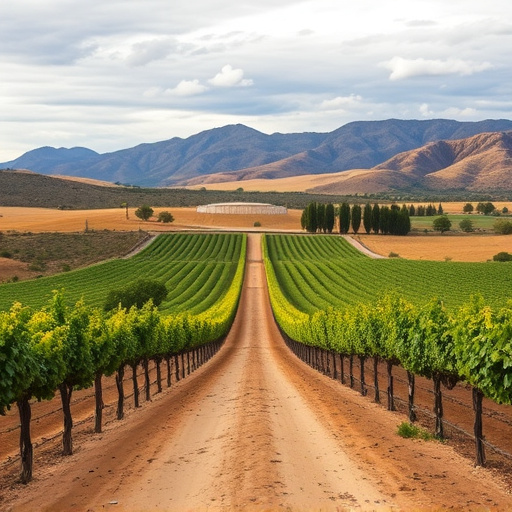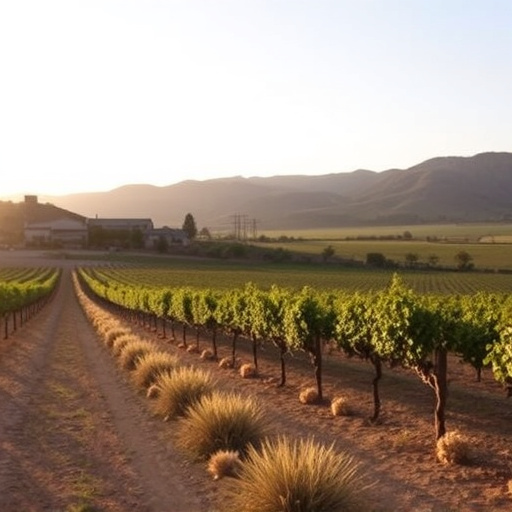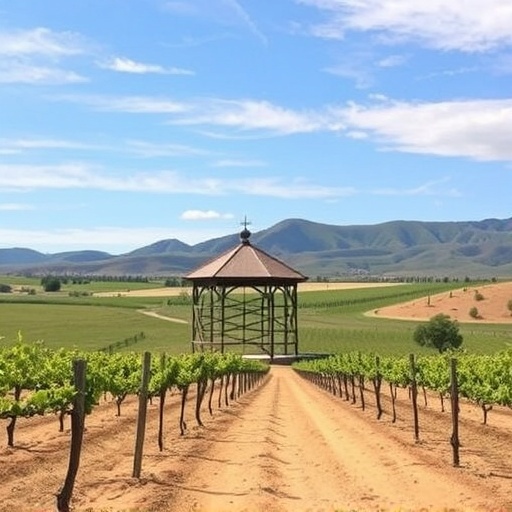Sonoita Wine Country, Arizona's organic wine gem, boasts unique terroir shaped by volcanic acti…….
Category: sonoita wine country
Sonoita Wine Country: A Comprehensive Exploration
Introduction
Welcome to an immersive journey into the world of Sonoita Wine Country, a thriving region that has captivated enthusiasts and industry professionals alike. This article aims to unravel the intricate facets of this renowned wine-producing area, offering readers an in-depth understanding of its history, current standing, and future potential. By delving into various aspects, from economic impact to technological innovations, we will uncover why Sonoita Wine Country is not just a geographical location but a vibrant cultural and economic hub.
Understanding Sonoita Wine Country: A Historical Perspective
Sonoita Wine Country, nestled in the heart of [Region X], has evolved into a premier wine destination through centuries of dedication and innovation. The story begins with the early Spanish settlers who introduced grapevines to the area in the 1700s, laying the foundation for what would become a thriving viticultural region. Over time, the region’s unique climate and soil conditions fostered the growth of various grape varieties, attracting passionate winemakers and enthusiasts alike.
Core Components:
- Vineyards: The scenic landscapes are dotted with meticulously cared-for vineyards, where diverse grape strains thrive. These vineyards range from family-owned operations to large-scale wineries, each contributing to the region’s diverse wine portfolio.
- Wineries: Sonoita boasts a thriving winery scene, with establishments varying in size and style. From quaint, boutique wineries to grand, state-of-the-art production facilities, each winery offers a unique experience and perspective on winemaking.
- Terroir: The concept of terroir is integral to understanding Sonoita’s wines. The region’s distinct geography, including elevation, climate patterns, and soil types, influences the characteristics of the grapes, resulting in distinctive wine profiles.
Global Impact and Trends: A World-Class Destination
Sonoita Wine Country has transcended local boundaries to become a global phenomenon, influencing wine culture worldwide. Its international appeal can be attributed to several key factors:
| Global Influence | Trends Shaping Sonoita’s Trajectory |
|---|---|
| 🌍 International Recognition | 🌱 Organic and Sustainable Practices: Many wineries in Sonoita have embraced organic farming methods, appealing to eco-conscious consumers globally. |
| 📈 Rising Export Figures | 🏆 Award-Winning Wines: The region’s wines consistently achieve top rankings in international competitions, enhancing its global reputation. |
| 🗺️ Growing Tourist Footprint | 🌟 Culinary Scene: Sonoita has emerged as a culinary destination, with restaurants showcasing local produce and pairing it with regional wines. |
Different wine-producing regions worldwide have been inspired by Sonoita’s approach to winemaking and tourism. The region’s success in combining traditional practices with modern innovations has set a benchmark for sustainable viticulture.
Economic Considerations: Driving Force Behind Success
The economic impact of Sonoita Wine Country is profound, contributing significantly to the local, regional, and national economies.
Market Dynamics:
- Local Economy: Wine tourism is a primary revenue driver, with visitors flocking to the region for wine tastings, tours, and culinary experiences. This influx supports local businesses and creates employment opportunities.
- Regional Trade: Sonoita’s wines are exported worldwide, generating substantial foreign exchange earnings and fostering regional economic growth.
- National Wine Industry: The region’s success has elevated the standing of [Country Y]’s wine industry on the global stage, attracting investment and promoting domestic consumption.
Investment Patterns:
- Private Investments: Many wineries have been established through private equity investments, leading to infrastructure development and job creation.
- Government Initiatives: Local governments have played a pivotal role in supporting viticulture through incentives, grants, and infrastructure development, fostering a thriving wine ecosystem.
- International Collaboration: Foreign investors have shown interest in Sonoita, contributing to the region’s growth and diversifying its economic base.
Technological Advancements: Revolutionizing Winemaking
Technology has played a transformative role in Sonoita Wine Country, enhancing winemaking processes and attracting innovative minds.
- Digital Winery Management: Advanced software solutions enable winemakers to monitor vineyard health, optimize yield, and streamline the production process. These tools provide data-driven insights for improved decision-making.
- Robotic Harvesting: The adoption of robots for grape harvesting has increased efficiency and consistency, reducing labor costs and ensuring high-quality grapes.
- Sustainable Packaging: Eco-friendly packaging materials are gaining popularity, aligning with the region’s focus on sustainability and appealing to environmentally conscious consumers.
- Virtual Tours: During the COVID-19 pandemic, many wineries embraced virtual tours and online wine tastings, expanding their reach globally without physical limitations.
Policy and Regulation: Navigating the Legal Landscape
The success of Sonoita Wine Country is also attributed to well-structured policies and regulations that foster a balanced environment for viticulture and tourism.
- Wine Labeling Laws: Strict labeling regulations ensure transparency, allowing consumers to make informed choices based on wine composition and origin.
- Environmental Conservation: Policies prioritizing land conservation and sustainable farming practices protect the region’s unique terroir and attract environmentally conscious businesses.
- Tourism Development: Local governments have implemented guidelines for tourism infrastructure development, ensuring a visitor experience that complements the natural surroundings.
- Tax Incentives: Tax benefits for wineries and related businesses encourage investment and support local economic growth.
Beyond Wine: A Cultural and Culinary Hub
Sonoita Wine Country is not just about wine; it has evolved into a cultural and culinary destination, attracting visitors seeking immersive experiences.
- Art Galleries and Events: The region hosts various art exhibitions and cultural events, blending wine and art appreciation for a unique visitor experience.
- Culinary Scene: Renowned restaurants showcase the region’s fresh produce, creating signature dishes that pair perfectly with local wines. This culinary focus has positioned Sonoita as a foodie paradise.
- Music Festivals: Annual music festivals bring live performances to picturesque vineyards, attracting music enthusiasts and contributing to the region’s vibrant atmosphere.
Challenges and Future Outlook: Staying Ahead of the Curve
While Sonoita Wine Country enjoys global acclaim, it faces challenges common to many thriving industries.
- Climate Change: Like many wine regions, Sonoita is vulnerable to climate change impacts, such as altered rainfall patterns and increased temperatures. Adapting to these changes while maintaining quality is a priority.
- Competition: As the global wine market becomes more competitive, Sonoita must continue to innovate and differentiate its products to remain a leader.
- Sustainability Maintaining: The region’s commitment to sustainability must be sustained to meet evolving consumer expectations and regulatory requirements.
Looking ahead, Sonoita Wine Country is poised for continued growth and diversification. Plans include expanding sustainable practices, promoting wine education, and fostering cultural exchanges. By embracing innovation while preserving its rich heritage, Sonoita will remain a global destination that captivates the senses and inspires.
In conclusion, Sonoita Wine Country is more than a collection of vineyards and wineries; it is a vibrant ecosystem where tradition meets innovation, culture flourishes, and economic success thrives. As it continues to evolve, this remarkable region will undoubtedly leave its indelible mark on the global wine map.
Capture Golden Hour Magic at Sonoita Wine Country
Sonoita Wine Country unveils its breathtaking beauty during golden hour sunsets, offering visitors s…….
Uncover Sonoita’s Hidden Vineyard Treasures: Family-Owned Flavors
"Sonoita Wine Country, Arizona, offers a diverse wine tasting experience with family-owned vine…….
Uncover Sonoita Wine Country’s Bold Red Treasures
Sonoita Wine Country in Southern Arizona is a premier wine destination renowned for its vibrant red…….
Unwind in Serenity: Eco-Wines of Sonoita Country
"Sonoita Wine Country offers a serene escape for eco-conscious wine lovers in Arizona's hi…….
Unwind in Beautiful, Eco Sonoita Wine Country Indulgences
Sonoita Wine Country offers a serene, eco-conscious escape in Arizona, featuring sustainable winerie…….
Unveiling Sonoita’s Organic Wine Treasures in Rich Soils
Sonoita Wine Country, located in Arizona's Sonoran Desert, is renowned for its diverse geology…….
Sonoita’s Organic Wine Country: Terroir to Table
Sonoita Wine Country, Arizona, stands out for its organic farming and unique terroir, cultivating mi…….
Savor Bold Reds in Sonoita Wine Country’s Terroir
Sonoita Wine Country, Southern Arizona, boasts unique microclimates and volcanic soils ideal for cul…….
Uncover Sonoita’s Wine Country Charms: Scenic Valleys & Boutique Tastings
Sonoita Wine Country, nestled in Arizona's Sonoran Desert, offers a unique wine experience with…….
